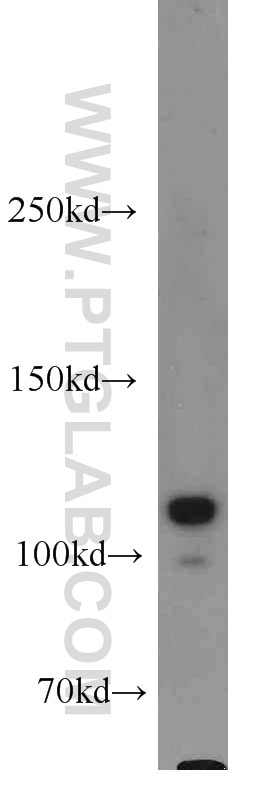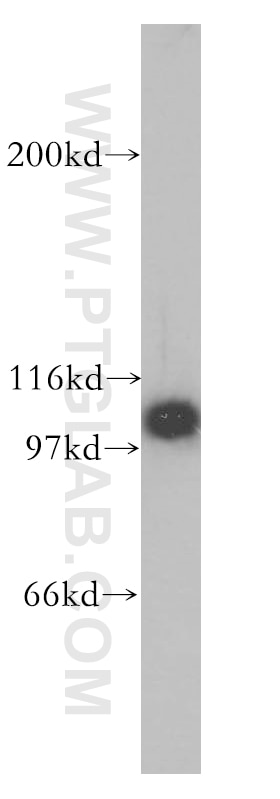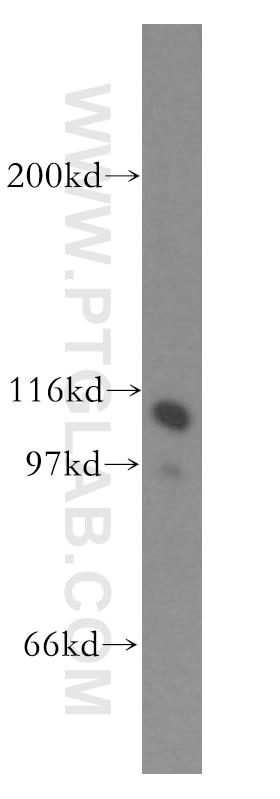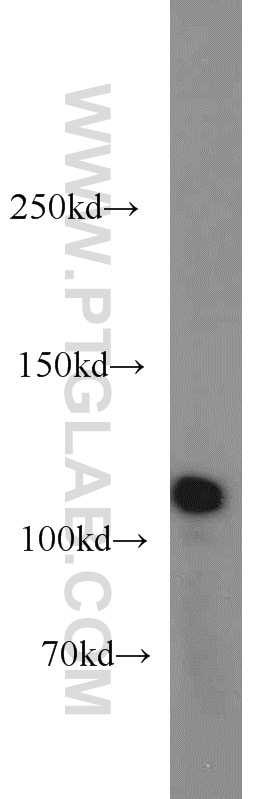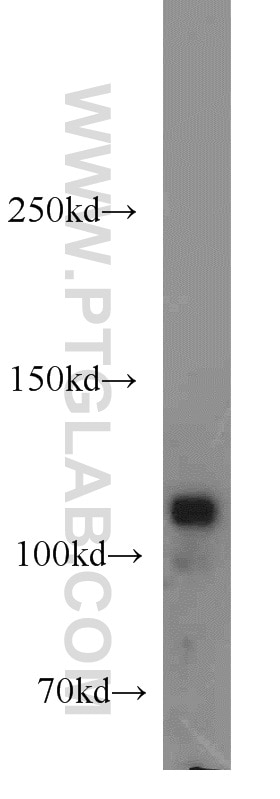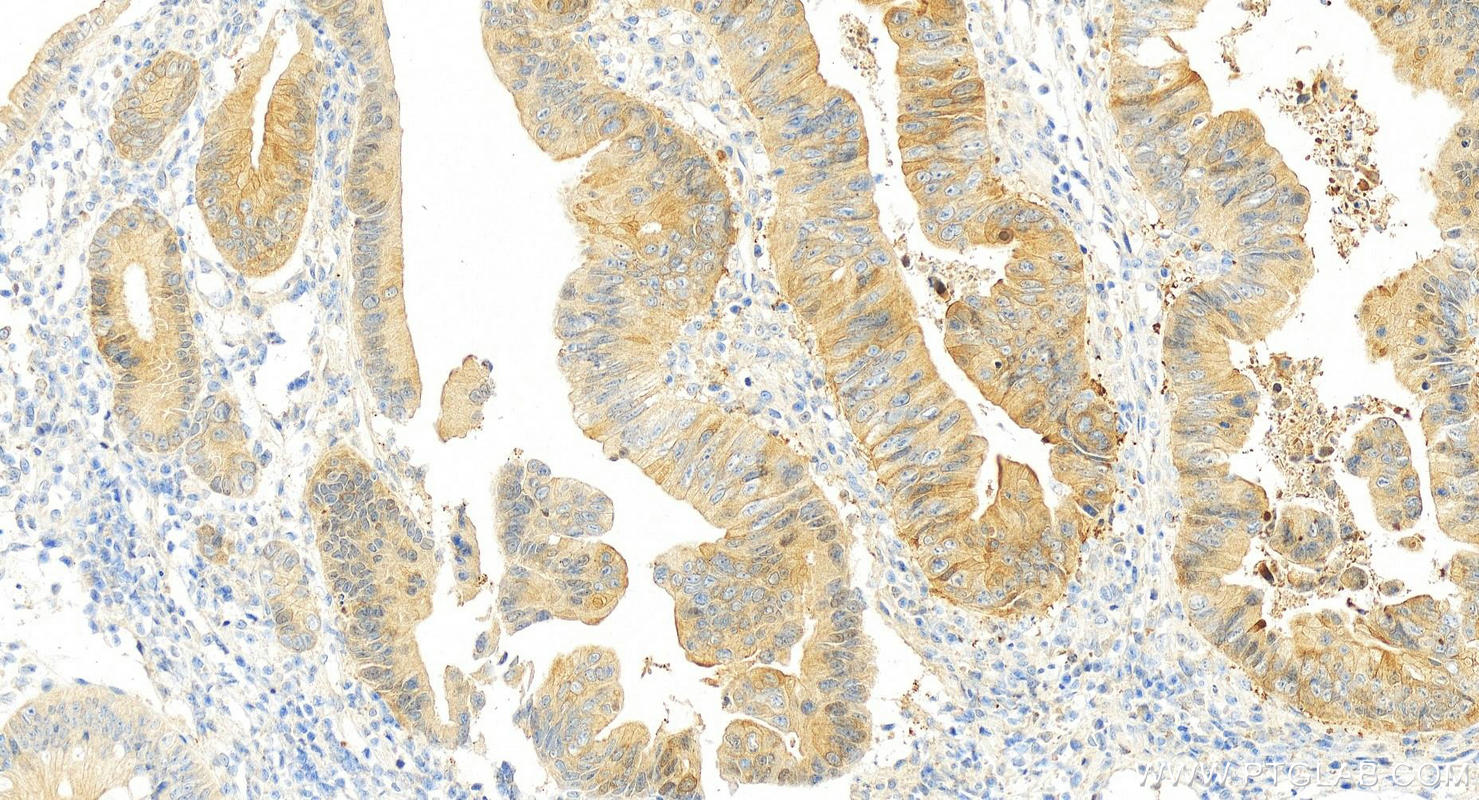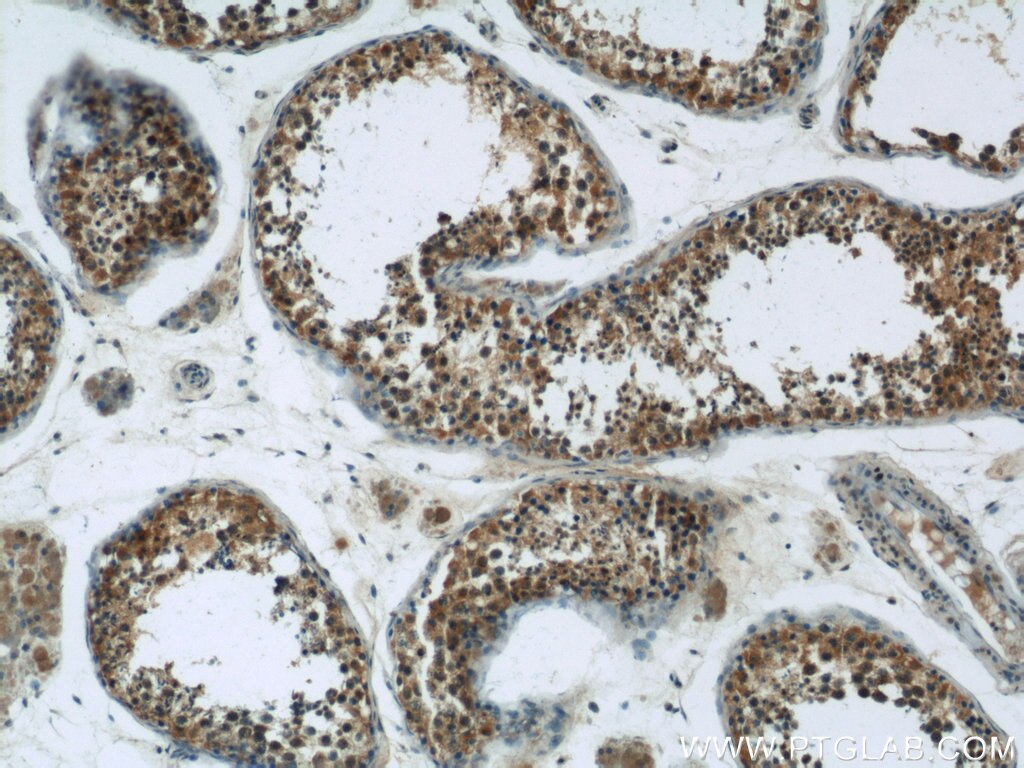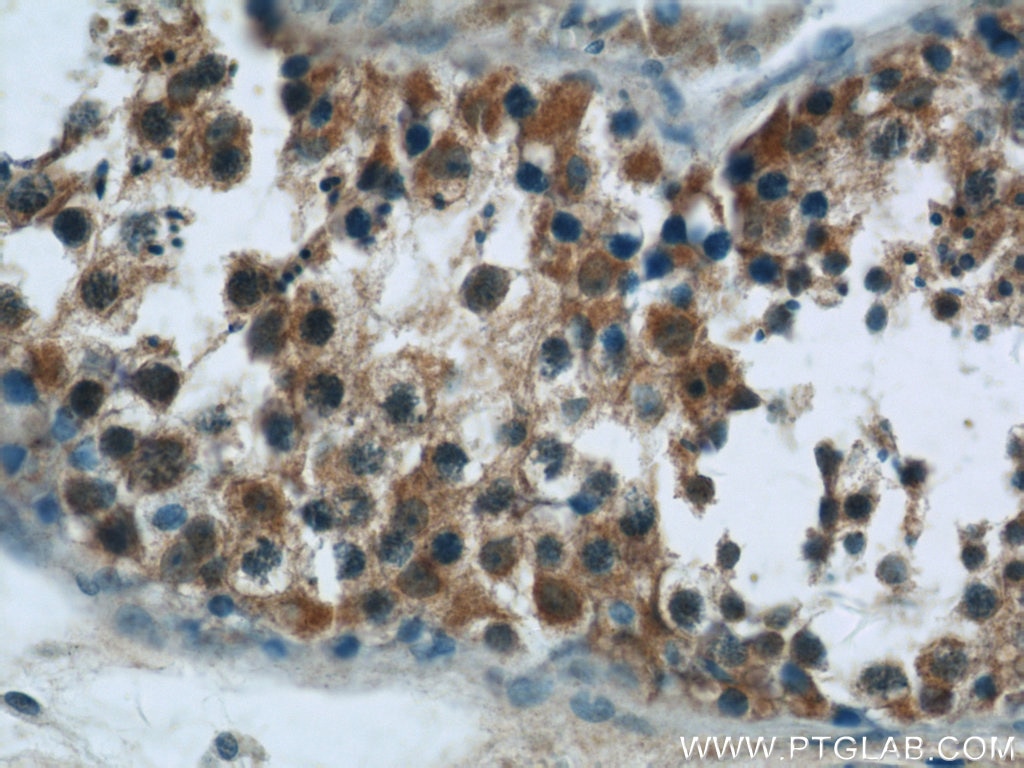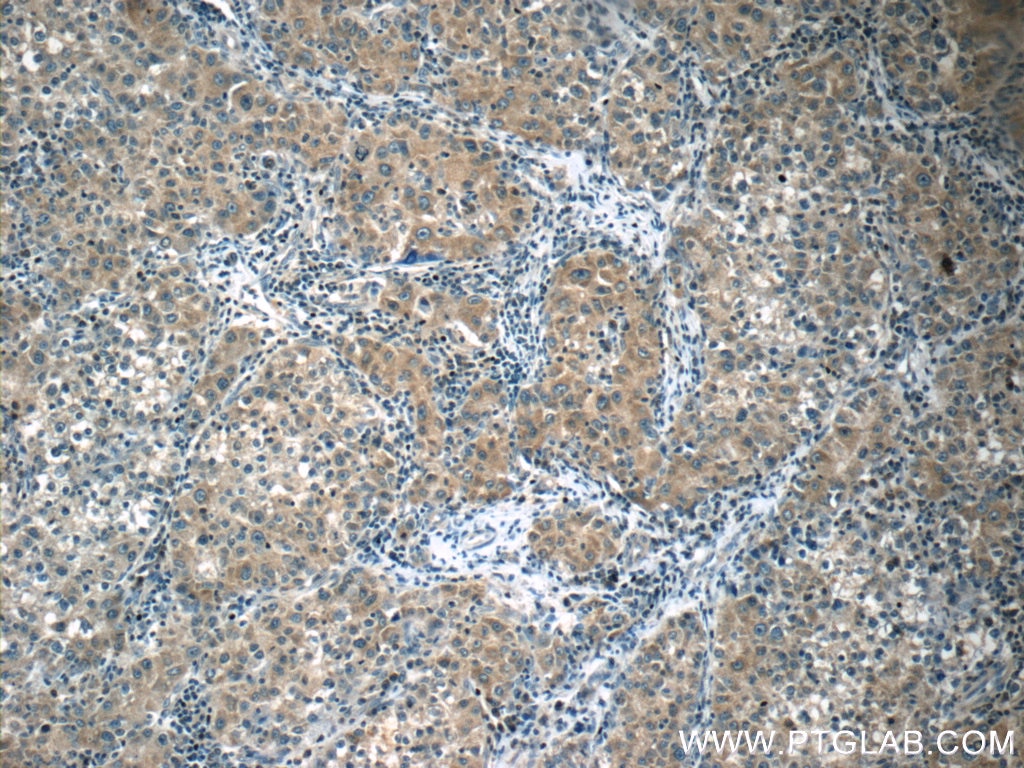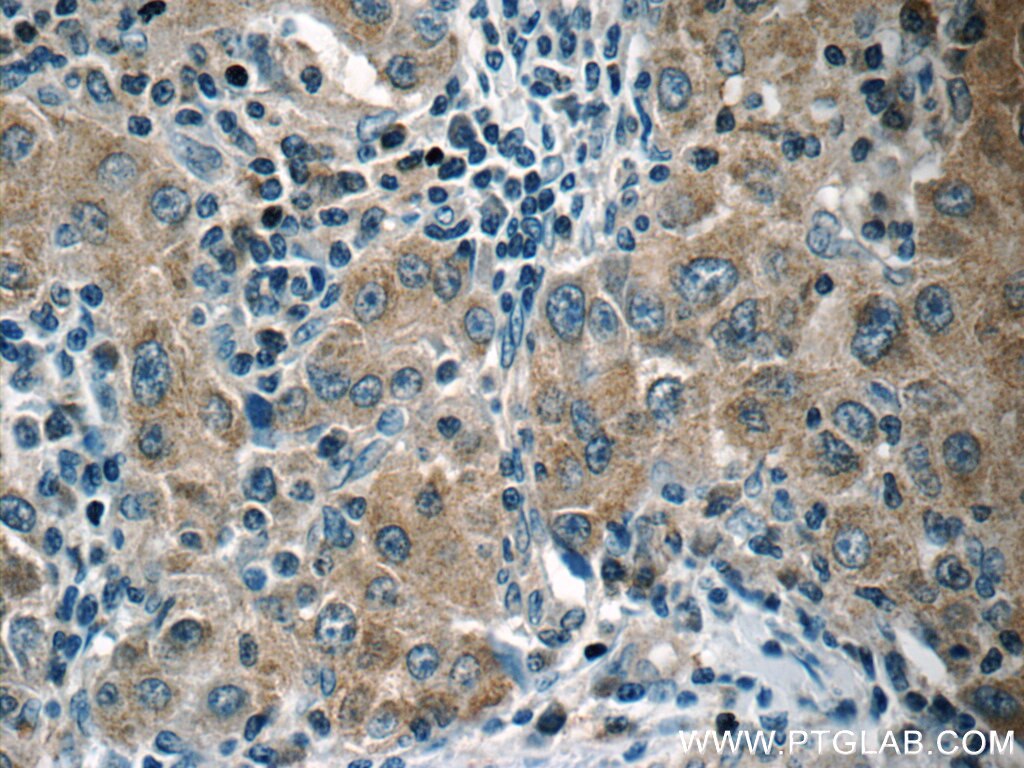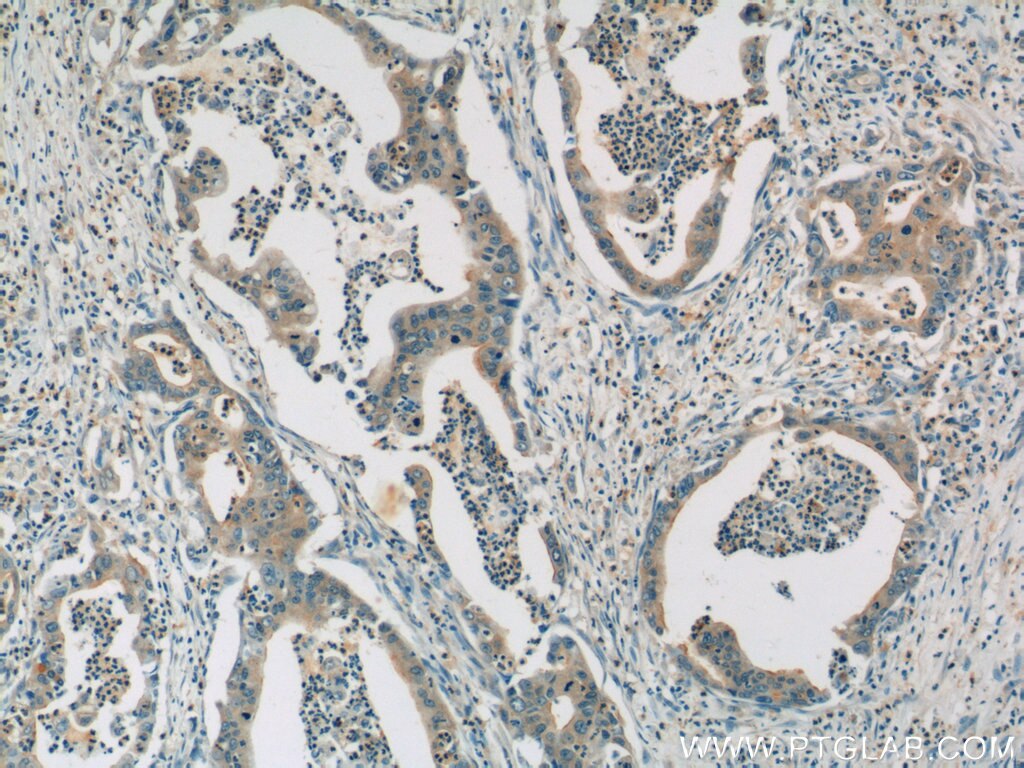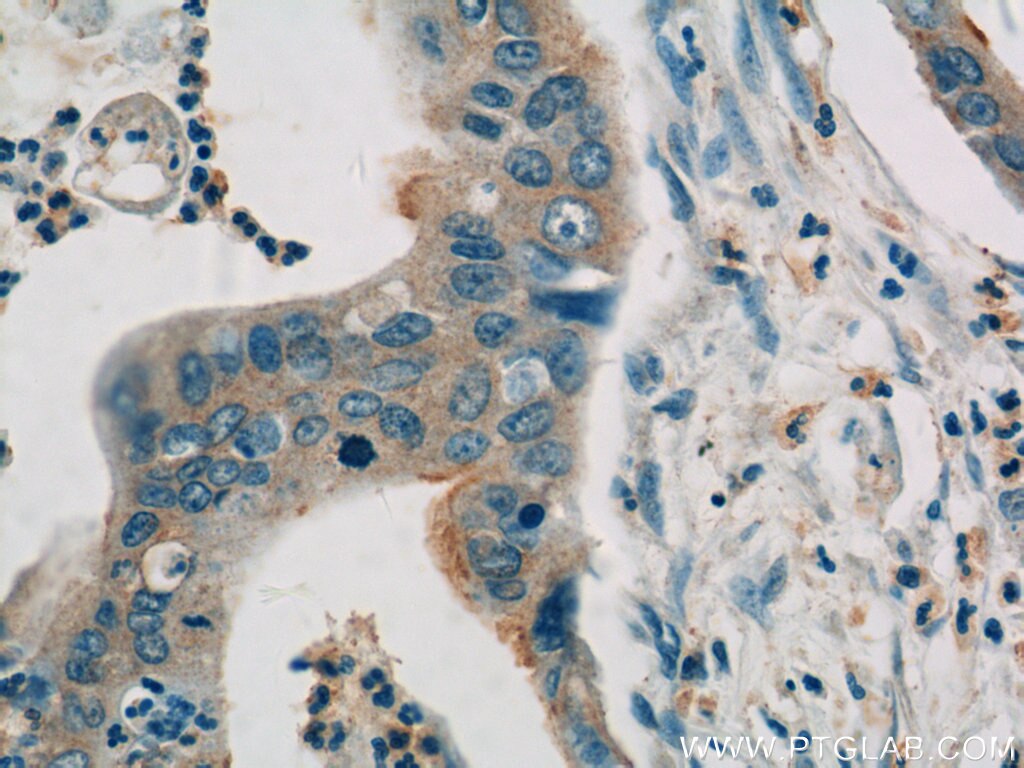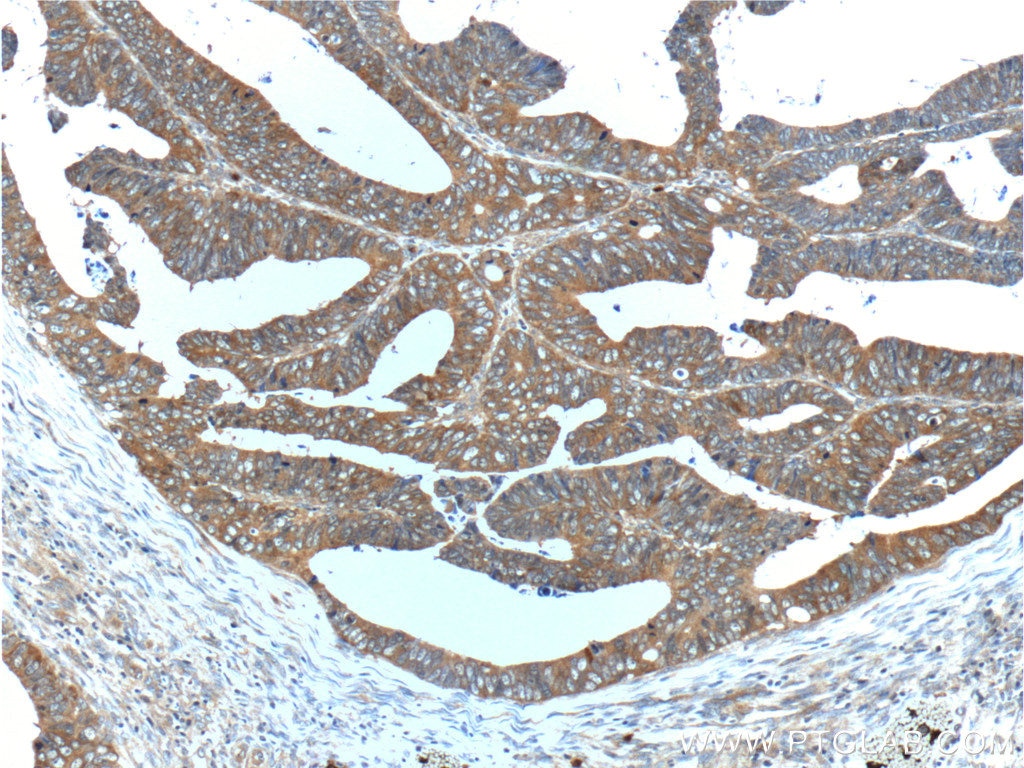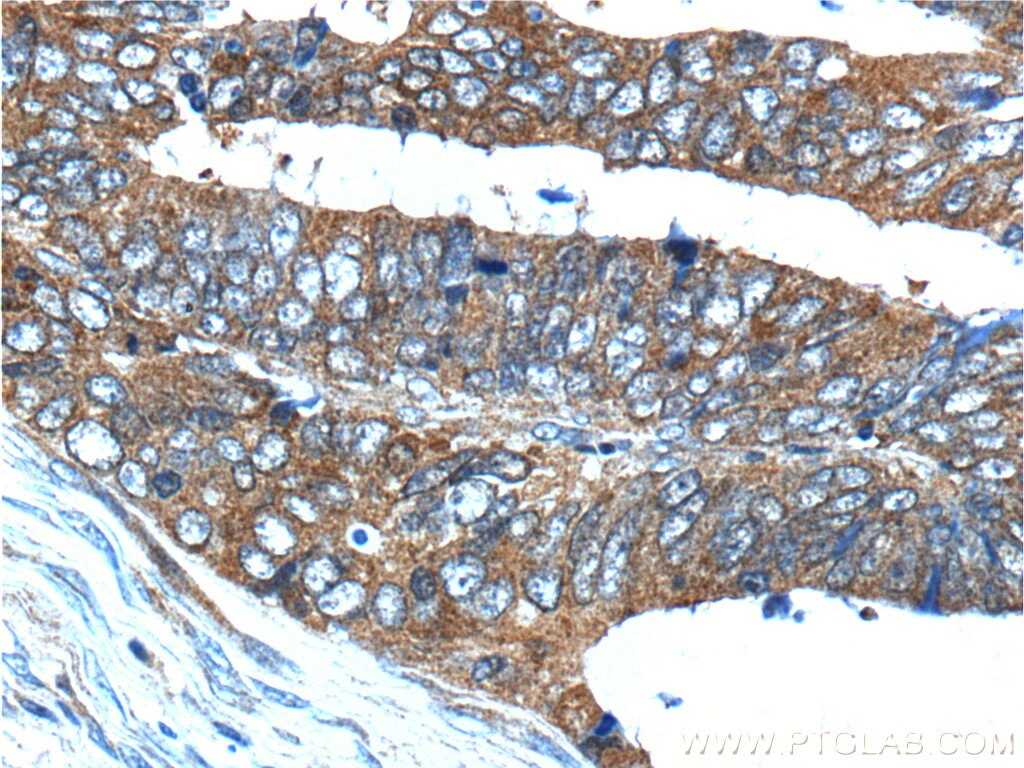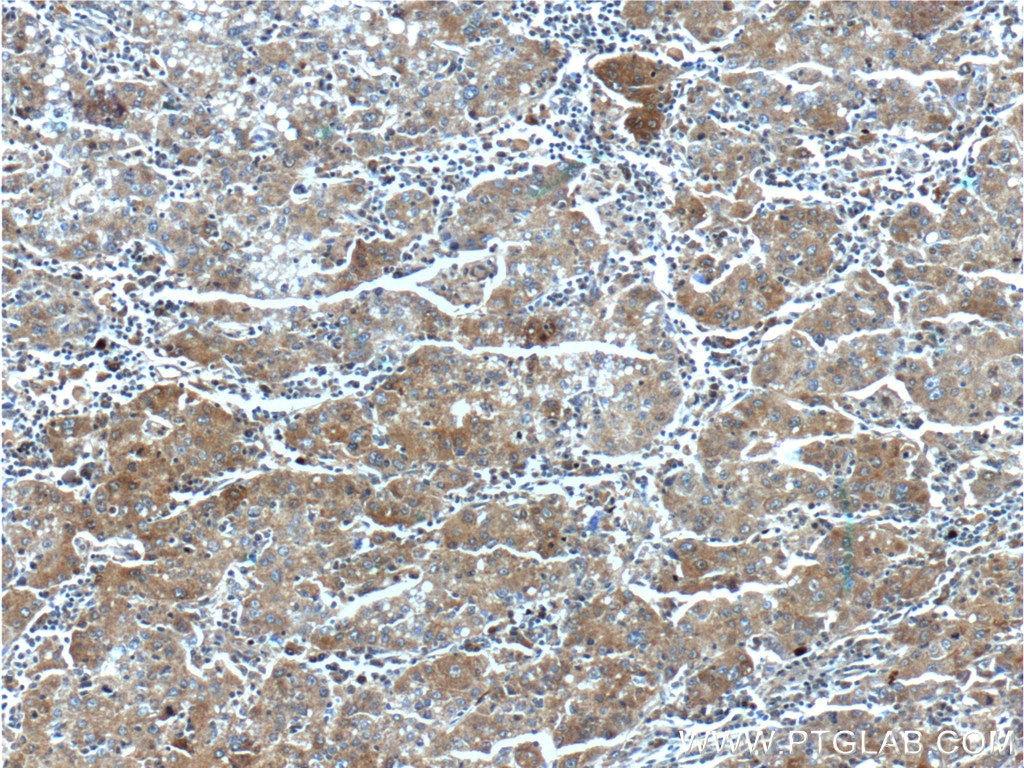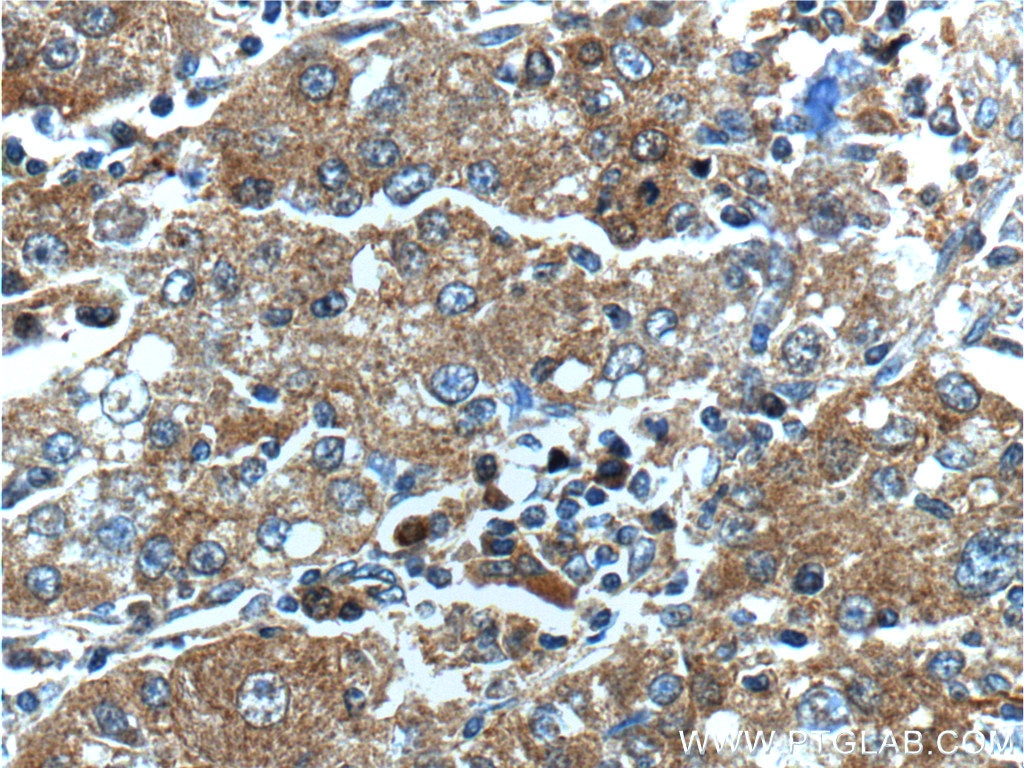Validation Data Gallery
Tested Applications
| Positive WB detected in | MCF7 cells, HeLa cells, human brain tissue, Jurkat cells, K-562 cells |
| Positive IHC detected in | human colon cancer tissue, human testis tissue, human liver cancer tissue, human pancreas cancer tissue Note: suggested antigen retrieval with TE buffer pH 9.0; (*) Alternatively, antigen retrieval may be performed with citrate buffer pH 6.0 |
Recommended dilution
| Application | Dilution |
|---|---|
| Western Blot (WB) | WB : 1:500-1:2000 |
| Immunohistochemistry (IHC) | IHC : 1:200-1:1200 |
| It is recommended that this reagent should be titrated in each testing system to obtain optimal results. | |
| Sample-dependent, Check data in validation data gallery. | |
Published Applications
| WB | See 3 publications below |
| IF | See 4 publications below |
Product Information
13383-1-AP targets HSPH1 in WB, IHC, IF, ELISA applications and shows reactivity with human samples.
| Tested Reactivity | human |
| Cited Reactivity | human, mouse, rat |
| Host / Isotype | Rabbit / IgG |
| Class | Polyclonal |
| Type | Antibody |
| Immunogen |
CatNo: Ag4224 Product name: Recombinant human HSPH1 protein Source: e coli.-derived, PGEX-4T Tag: GST Domain: 508-858 aa of BC037553 Sequence: MSSEADMECLNQRPPENPDTDKNVQQDNSEAGTQPQVQTDAQQTSQSPPSPELTSEENKIPDADKANEKKVDQPPEAKKPKIKVVNVELPIEANLVWQLGKDLLNMYIETEGKMIMQDKLEKERNDAKNAVEEYVYEFRDKLCGPYEKFICEQDHQNFLRLLTETEDWLYEEGEDQAKQAYVDKLEELMKIGTPVKVRFQEAEERPKMFEELGQRLQHYAKIAADFRNKDEKYNHIDESEMKKVEKSVNEVMEWMNNVMNAQAKKSLDQDPVVRAQEIKTKIKELNNTCEPVVTQPKPKIESPKLERTPNGPNIDKKEEDLEDKNNFGAEPPHQNGECYPNEKNSVNMDLD 相同性解析による交差性が予測される生物種 |
| Full Name | heat shock 105kDa/110kDa protein 1 |
| Calculated molecular weight | 858 aa, 97 kDa |
| Observed molecular weight | 110 kDa |
| GenBank accession number | BC037553 |
| Gene Symbol | HSPH1 |
| Gene ID (NCBI) | 10808 |
| RRID | AB_2233157 |
| Conjugate | Unconjugated |
| Form | |
| Form | Liquid |
| Purification Method | Antigen affinity purification |
| UNIPROT ID | Q92598 |
| Storage Buffer | PBS with 0.02% sodium azide and 50% glycerol{{ptg:BufferTemp}}7.3 |
| Storage Conditions | Store at -20°C. Stable for one year after shipment. Aliquoting is unnecessary for -20oC storage. |
Background Information
HSP105, also known as HSP110 or HSPH1, belongs to the heat shock protein (HSP) family. Human HSP105 is a high-molecular-weight chaperone protein expressed at constitutively low levels as a cytoplasmic α-isoform and as an inducible nuclear β-isoform on exposure to various forms of stress. HSP105 is constitutively overexpressed in several solid tumors, including melanoma, breast, thyroid, and gastroenteric cancers, and exerts antiapoptotic functions. Recently HSP105 has been identified as a novel candidate biomarker of lymphoma aggressiveness. This antibody recognizes both HSP105α and HSP105β isoforms. Western blot analysis using this antibody detected a major band around 100-110 kDa in Jurkat cells.
Protocols
| Product Specific Protocols | |
|---|---|
| IHC protocol for HSPH1 antibody 13383-1-AP | Download protocol |
| WB protocol for HSPH1 antibody 13383-1-AP | Download protocol |
| Standard Protocols | |
|---|---|
| Click here to view our Standard Protocols |
Publications
| Species | Application | Title |
|---|---|---|
Nat Cell Biol Heat-shock chaperone HSPB1 regulates cytoplasmic TDP-43 phase separation and liquid-to-gel transition | ||
Dev Cell Nuclear import carrier Hikeshi cooperates with HSP70 to promote murine oligodendrocyte differentiation and CNS myelination | ||
Mol Ther Nucleic Acids Age-associated changes in microglia and astrocytes ameliorate blood-brain barrier dysfunction | ||
Mol Reprod Dev Identification of Hsf1 as a novel androgen receptor-regulated gene in mouse sertoli cells. | ||
bioRxiv Endothelial Cells are Heterogeneous in Different Brain Regions and are Dramatically Altered in Alzheimer's Disease | ||

